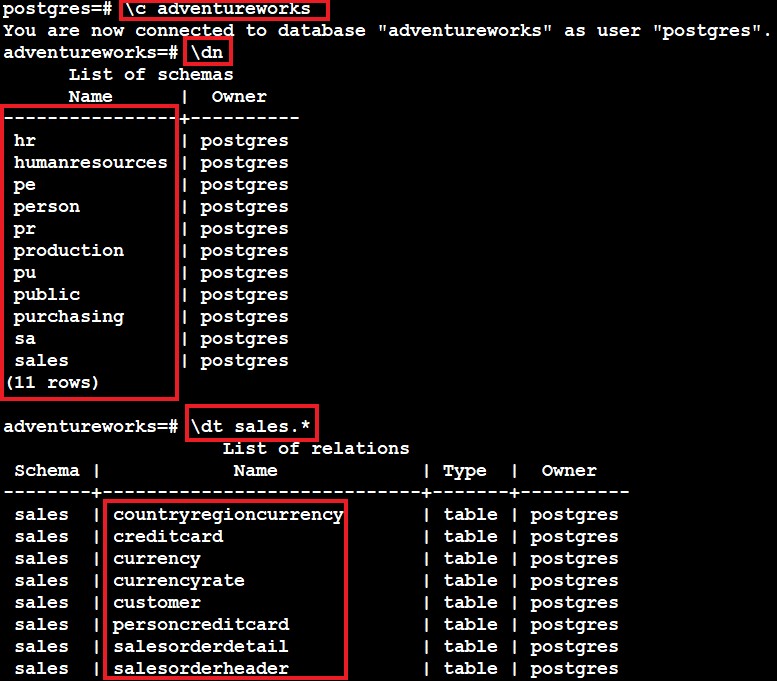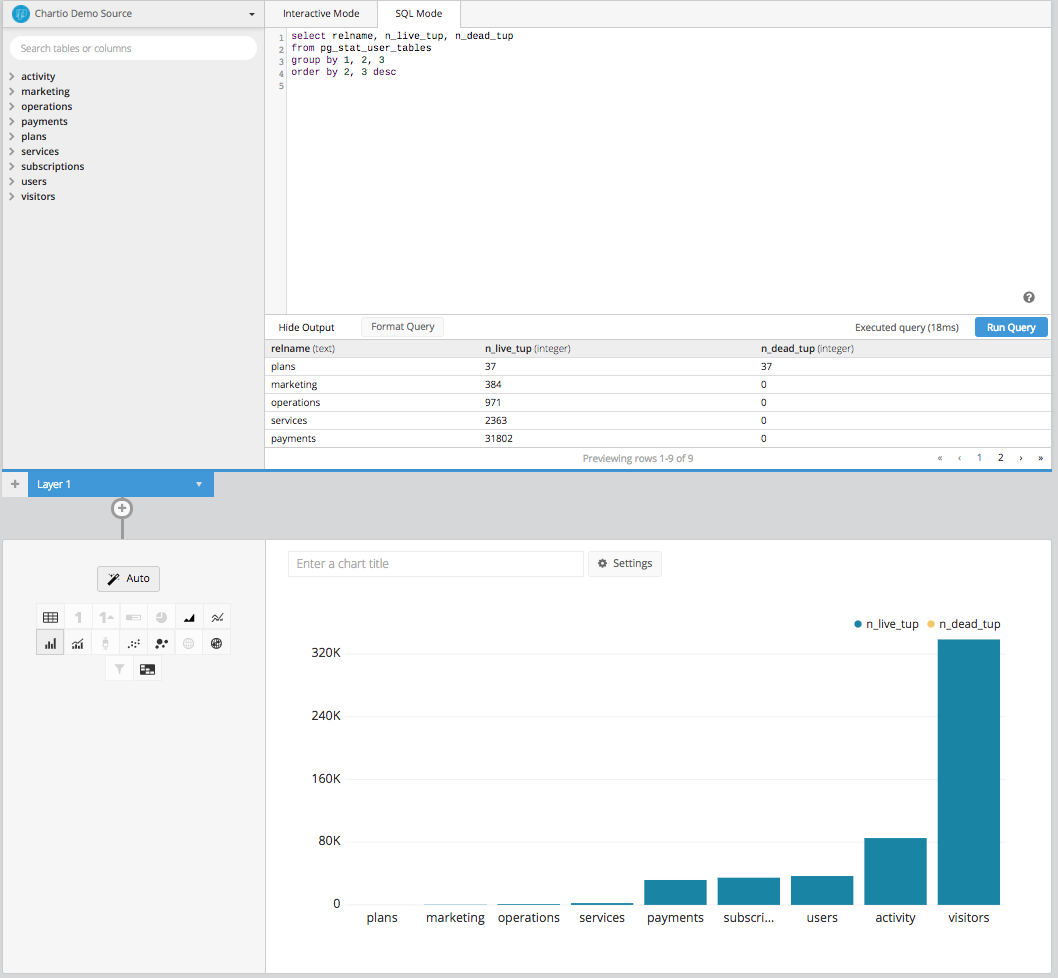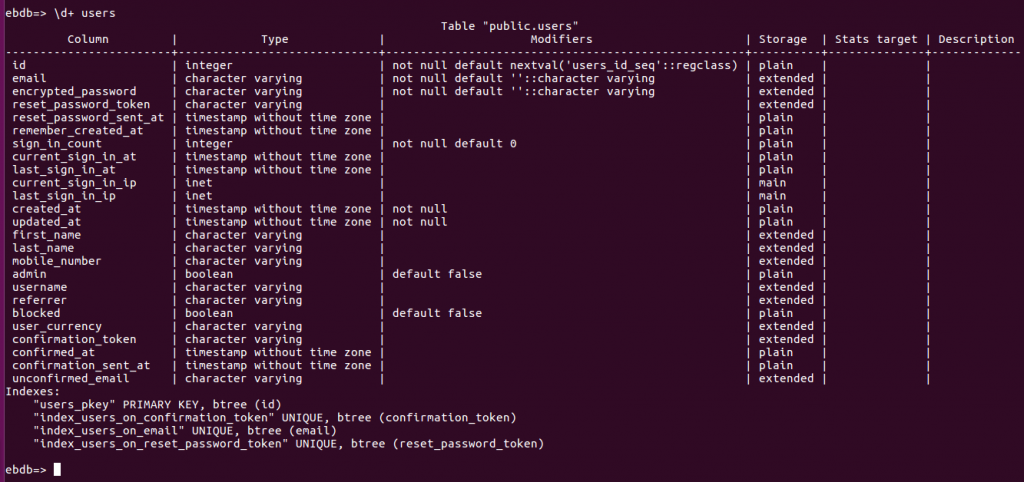
SET DEFAULT nextval('uses_serial_id_seq') With this method, you define a table as follows: This method is a shortcut for defining a sequence and setting a DEFAULT clause as above.
#Postgresql create table primary index serial
Using the serial and bigserial pseudo-types PostgreSQL uses the DEFAULT value whenever the INSERT statement doesn’t explicitly insert that column. Id uuid DEFAULT gen_random_uuid() PRIMARY KEY, Id bigint DEFAULT nextval('integer_id_seq') PRIMARY KEY, You can use this method with sequences and UUIDs. There are four ways to define a column with automatically generated values: Using the DEFAULT clause Don’t try to convert them to strings or numeric - you will waste space and lose performance. Note that you should always use the PostgreSQL data type uuid for UUIDs.

Now, sometimes a table has a natural primary key, for example the social security number of a country’s citizens. This is because foreign key constraints typically reference primary keys, and changing a primary key that is referenced elsewhere causes trouble or unnecessary work. You are well advised to choose a primary key that is not only unique, but also never changes during the lifetime of a table row. If you wonder why, search the internet for the thousands of questions asking for help with removing duplicate entries from a table. In a relational database, it is important to be able to identify an individual table row. Why auto-generated primary keys?Įvery table needs a primary key. In this article, I’ll explore the options and give recommendations. UPDATED : Sometimes customers ask me about the best choice for auto-generated primary keys. If you don't expect more than 2 billion rows (> 2147483647) over the lifetime of your table (including waste and deleted rows), consider integer (4 bytes) instead of bigint (8 bytes).Auto-generated auto-increment autoincrement identity columns postgresql primary key sequence uuid , CONSTRAINT u_constraint UNIQUE (id_a, id_b, id_c) my_table_id bigserial PRIMARY KEY - for pg 9.6 or older My_table_id bigint GENERATED BY DEFAULT AS IDENTITY PRIMARY KEY - for pg 10+ You might consider a serial column as primary key or an IDENTITY column in Postgres 10 or later. No use for mixed case identifiers without double quotes in PostgreSQL. PostgreSQL UPSERT issue with NULL values.
#Postgresql create table primary index how to
Discussing this - and how to use UPSERT with partial indexes: While this is elegant and efficient for a single nullable column in the UNIQUE index, it gets out of hand quickly for more than one. The best solution depends on the details of your requirements. Or use two partial UNIQUE indexes and no complete index (or constraint).

This way you can enter for (id_A, id_B, id_C) in your table: (1, 2, 1) Create a partial unique index in addition to the one you have: CREATE UNIQUE INDEX ab_c_null_idx ON my_table (id_A, id_B) WHERE id_C IS NULL Create unique constraint with null columns., ADD CONSTRAINT u_constrainte UNIQUE NULLS NOT DISTINCT (id_A, id_B, id_C)

This works out of the box with NULLS NOT DISTINCT: ALTER TABLE my_table


 0 kommentar(er)
0 kommentar(er)
